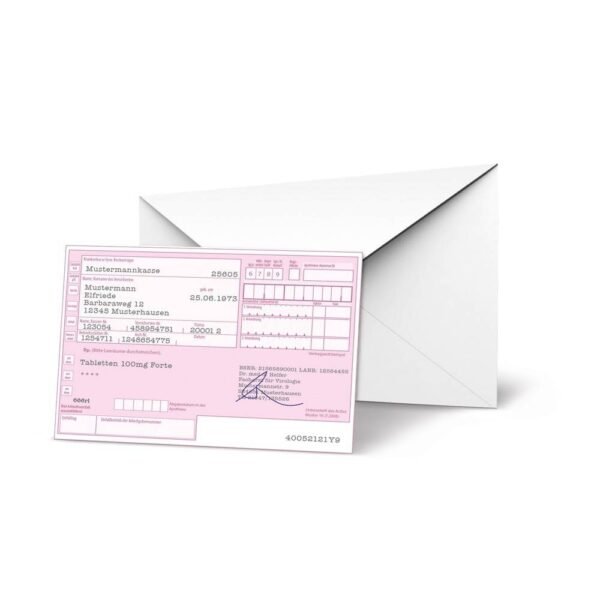Pharmacological action
Estradiol, which is part of the drug Femoston® 1, is identical to endogenous human estradiol, which is the most active estrogen.
Dydrogesterone is a progestogen, effective when taken orally and having an activity similar to parenterally administered progesterone.
Clinical efficacy and safety
Menopausal hormone therapy (MHT) with Femoston® 1 prevents bone loss in the postmenopausal period or after ovariectomy.
Estradiol replenishes the estrogen deficiency in the female body in perimenopause (if therapy is started no earlier than 6 months after the last menstruation) and in postmenopause, and reduces the severity of clinical manifestations of postmenopause during the first weeks of treatment.
During HRT, the inclusion of dydrogesterone ensures complete secretory transformation of the endometrium, thereby reducing the risk of endometrial hyperplasia increased by estrogen.
Pharmacokinetics
Estradiol
The absorption of estradiol depends on the particle size; micronized estradiol is rapidly absorbed from the gastrointestinal tract.
Estrogen can be found both in bound and free states. About 98-99% of the estradiol dose binds to plasma proteins, of which 30-52% with albumin and about 46-69% with sex hormone-binding globulin (SHBG).
Estrogens penetrate into breast milk.
After oral administration, estradiol is actively metabolized in the liver. The main unconjugated and conjugated metabolites are estrone and estrone sulfate, which have estrogenic activity. Estrone sulfate can undergo enterohepatic recirculation.
Estrone and estradiol are excreted conjugated with glucuronic acid mainly by the kidneys. T1/2 is 10-16 hours.
With daily administration of Femoston® 1, the concentration of estradiol in the blood plasma reaches a constant value in about 5 days. Usually, this indicator is achieved within 8-11 days after the start of therapy.
Dydrogesterone
After oral administration, it is rapidly absorbed and completely metabolized. Tmax values for dydrogesterone vary from 30 minutes to 1.5 hours.
After a single dose, food delays the achievement of Cmax of dydrogesterone in plasma by about 1 hour, which leads to a decrease in Cmax of dydrogesterone in blood plasma by about 20%, without affecting the degree of exposure to dydrogesterone and 20α-dihydrodydrogesterone (DHD). More than 90% of dydrogesterone and DGD are bound to plasma proteins.
The main metabolite of dydrogesterone is DGD. Cmax of DGD in blood plasma is achieved in approximately the same time as for dydrogesterone. The concentration of DGD in blood plasma significantly exceeds the initial concentration of dydrogesterone, the ratios of AUC and Cmax values of DGD to dydrogesterone are approximately 25 and 20, respectively. T1/2 is about 15 hours for dydrogesterone and DGD.
A common characteristic feature of all metabolites of dydrogesterone is the preservation of the 4,6-dien-3-one configuration of the original substance and the absence of 17α-hydroxylation, which causes the absence of estrogenic and androgenic activity.
Dydrogesterone is completely excreted after 72 hours. On average, 63% of the dose taken is excreted by the kidneys. The apparent total plasma clearance of dydrogesterone is high and is approximately 20 l/min. DGD is detected in urine mainly as glucuronic acid conjugates.
The drug is characterized by linear pharmacokinetics with single and multiple oral administration in the dose range from 2.5 mg to 20 mg. Comparison of the kinetics of single and multiple doses shows that the pharmacokinetic properties of dydrogesterone and DGD do not change with repeated doses.
Css of dydrogesterone is achieved 3 days after the start of taking the drug.
Indications for the drug Femoston
menopausal hormone therapy (MHT) of disorders caused by estrogen deficiency in women in perimenopause (not earlier than 6 months after the last menstruation) or in postmenopausal women;
prevention of postmenopausal osteoporosis in women with a high risk of fractures in case of intolerance or contraindications to the use of other drugs.
Contraindications for use
hypersensitivity to dydrogesterone, estradiol and / or to any excipient in the drug;
pregnancy and lactation;
diagnosed or suspected breast cancer (BC); diagnosed or suspected estrogen-dependent malignancies (eg, endometrial cancer); diagnosed or suspected progestogen-dependent neoplasms (eg, meningioma); vaginal bleeding of unknown etiology; untreated endometrial hyperplasia;
thrombosis (arterial and venous) and thromboembolism currently or in history (including deep vein thrombosis …
Warning: Always consult a doctor before using medications.
View cart “Femoston mini 0.5 mg/2.5 mg Filmtabletten 28 Stk. (Estradiol 0,5 mg / Dydrogesteron 2,5 mg)” has been added to your cart.
Femoston mono 2mg Filmtabletten 28 Stk.(Estradiol 2 mg)
€37.11
Hormone replacement therapy.
Anti-climacteric estrogen drug
Description
Additional information
Shipping & Delivery
Related products
Gynokadin 2mg Tabletten 30 Stk.(Estradiol)
€39.71
Nolvadex, 20mg, 100
€147.72
What is Nolvadex?
Nolvadex is a synthetic non-steroidal antiestrogen drug that binds to cytosolic or nuclear estrogen receptors in estrogen-active organs. These organs include the ovary, uterus, and prostate. In these tissues, tamoxifen blocks the effect of estrogen on gene expression. It is used as a cure for breast cancer.
Cyclo Progynova N 2mg/0.15mg 3×21 Stk.(Estradiol valerat-2 mg/Estradiol-1,53 mg/ Levonorgestrel-0.15 mg)
€79.54
Hormone replacement therapy for climacteric disorders, involutional changes in the skin and urinary and genital tracts, depressive states in the climacteric period, as well as symptoms of estrogen deficiency due to natural menopause or hypogonadism, sterilization or primary ovarian dysfunction in women with an intact uterus; prevention of postmenopausal osteoporosis; normalization of irregular menstrual cycles; treatment of primary or secondary amenorrhea.
PROGYNOVA 21 Film-coated tablets, 3 × 21 (estradiol-2 mg)
€54.12
Hot flashes, increased sweating, sleep disorders, depression, nervousness, irritability, headaches, dizziness when menstruation stops during menopause, after surgical removal of the ovaries or their irradiation; hyperesthesia of the bladder, degenerative changes in the skin and mucous membrane, osteoporosis in the climacteric period.
Used mainly as part of combination drugs.
PROGYNOVA mite 21 film-coated tablets, 3 × 21 (estradiol-1 mg)
€43.16
Hot flashes, increased sweating, sleep disorders, depression, nervousness, irritability, headaches, dizziness when menstruation stops during menopause, after surgical removal of the ovaries or their irradiation; hyperesthesia of the bladder, degenerative changes in the skin and mucous membrane, osteoporosis in the climacteric period.
Used mainly as part of combination drugs.












